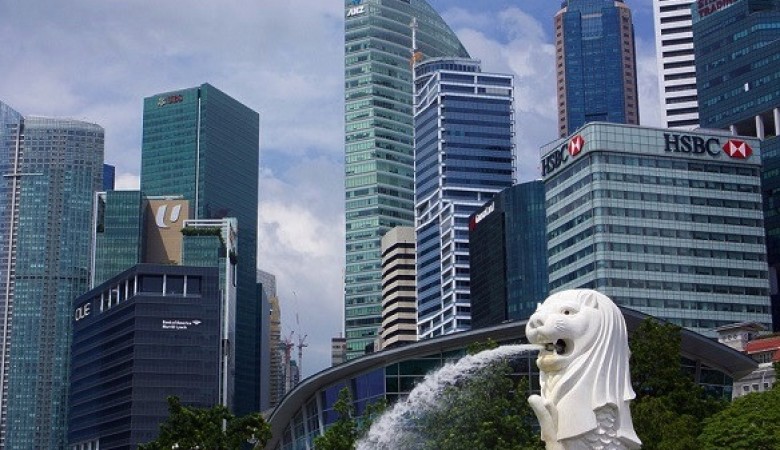The Ministry of Trade and Industry (MTI) has announced that it expects Singapore’s GDP growth for 2019 to come in at 1.5 to 2.5%.
At the last Economic Survey of Singapore published in February, MTI highlighted
that growth in most of the key advanced and regional economies was expected to moderate in 2019 as compared to 2018.
Since then, the global growth outlook for 2019 has weakened further. In particular, the IMF has revised downwards its global growth projection by 0.2 percentage-point (pp) to 3.3 per cent, with downgrades to the forecasts for some of Singapore’s key final demand markets such as the US and Eurozone economies.
 In the US, notwithstanding the strong GDP growth posted in the first quarter of 2019, growth for the full year is expected to moderate from 2018’s growth by more than earlier anticipated. While private consumption is likely to continue to support GDP growth on the back of healthy labour market conditions, weaker export demand and reduced fiscal impetus are expected to weigh on growth.
In the US, notwithstanding the strong GDP growth posted in the first quarter of 2019, growth for the full year is expected to moderate from 2018’s growth by more than earlier anticipated. While private consumption is likely to continue to support GDP growth on the back of healthy labour market conditions, weaker export demand and reduced fiscal impetus are expected to weigh on growth.
Similarly, the growth outlook for the Eurozone economy in 2019 has weakened since the start of the year. Growth momentum is expected to ease in tandem with the moderation in business and consumer confidence, which has in turn been dampened by weak external demand conditions and continued Brexit-related uncertainties.
Nonetheless, domestic demand is likely to lend some support to the Eurozone economy on account of resilient labour market conditions and low borrowing costs.
In Asia, China’s economy is expected to slow in 2019 as compared to 2018 on the back of a moderation in investment growth as well as weaker exports growth, with the latter weighed down in part by the effect of the US tariffs.
However, policy stimulus measures implemented by the Chinese government are likely to provide some support to the economy. Meanwhile, growth of the key ASEAN economies of
Malaysia, Thailand and Indonesia in 2019 is expected to remain unchanged or ease from the levels registered in 2018. In particular, private consumption is likely to remain resilient, even as merchandise exports are likely to slow.
At the same time, the global growth outlook remains clouded by uncertainties and downside risks. First, with the recent trade actions announced by the US and China, there is a risk of a further escalation of the trade conflicts between the US and its key trading partners, especially China. Should this happen and trigger a sharp fall in global business and consumer confidence, investments and consumption could decline, thereby adversely affecting global growth.
Second, there remains the risk of slower-than-expected growth in the Chinese economy, which could be precipitated by the imposition of further tariffs by the US. If this occurs and leads to a sharp fall in import demand, the region’s growth would be negatively affected.
Third, the delay in Brexit until 31 October 2019 has prolonged economic uncertainty and could further weigh on consumer and business sentiments in the UK and EU.
Furthermore, the possibility of a “no-deal” Brexit remains and could have a negative impact on global growth should it materialise.
Against this challenging external economic backdrop, key outward-oriented sectors in the Singapore economy are expected to slow this year.
First, the manufacturing sector is likely to see a sharp slowdown in growth following two years of robust expansion. In particular, the electronics and precision engineering clusters, which have already contracted for two consecutive quarters, are expected to face strong headwinds on account of a sharper-than-expected downturn in the global electronics cycle, as well as uncertainties arising from the ongoing trade conflicts.
Second, growth in outward-oriented services sectors such as wholesale trade and transportation & storage is expected to ease in tandem with the moderation in growth in key advanced and regional economies.
Nonetheless, there remain pockets of strength in the Singapore economy. In particular, the growth of the information & communications sector is projected to remain healthy given firms’ continued robust demand for IT and digital solutions.
At the same time, the education, health & social services segment’s growth is expected to be resilient, supported by the ongoing ramp-up of operations in healthcare facilities. Meanwhile, the construction sector is likely to see a sustained turnaround after three consecutive years of contraction, as the pickup in contracts awarded since the second half of 2017 is expected to continue to translate into construction activities for the rest of the year.




































